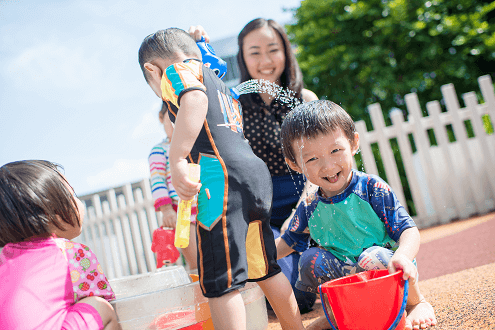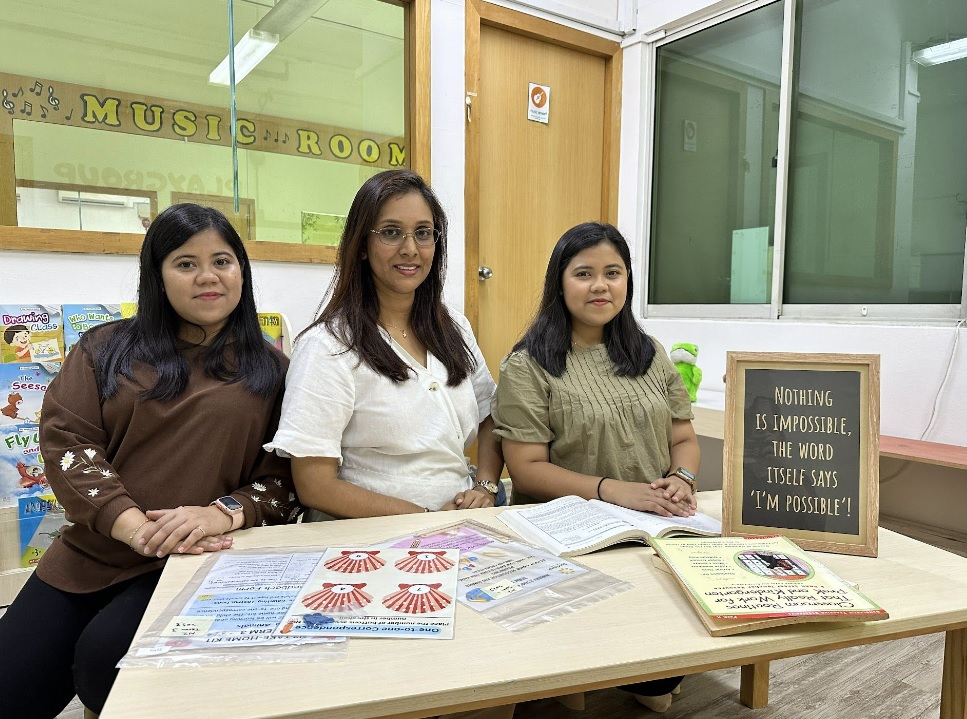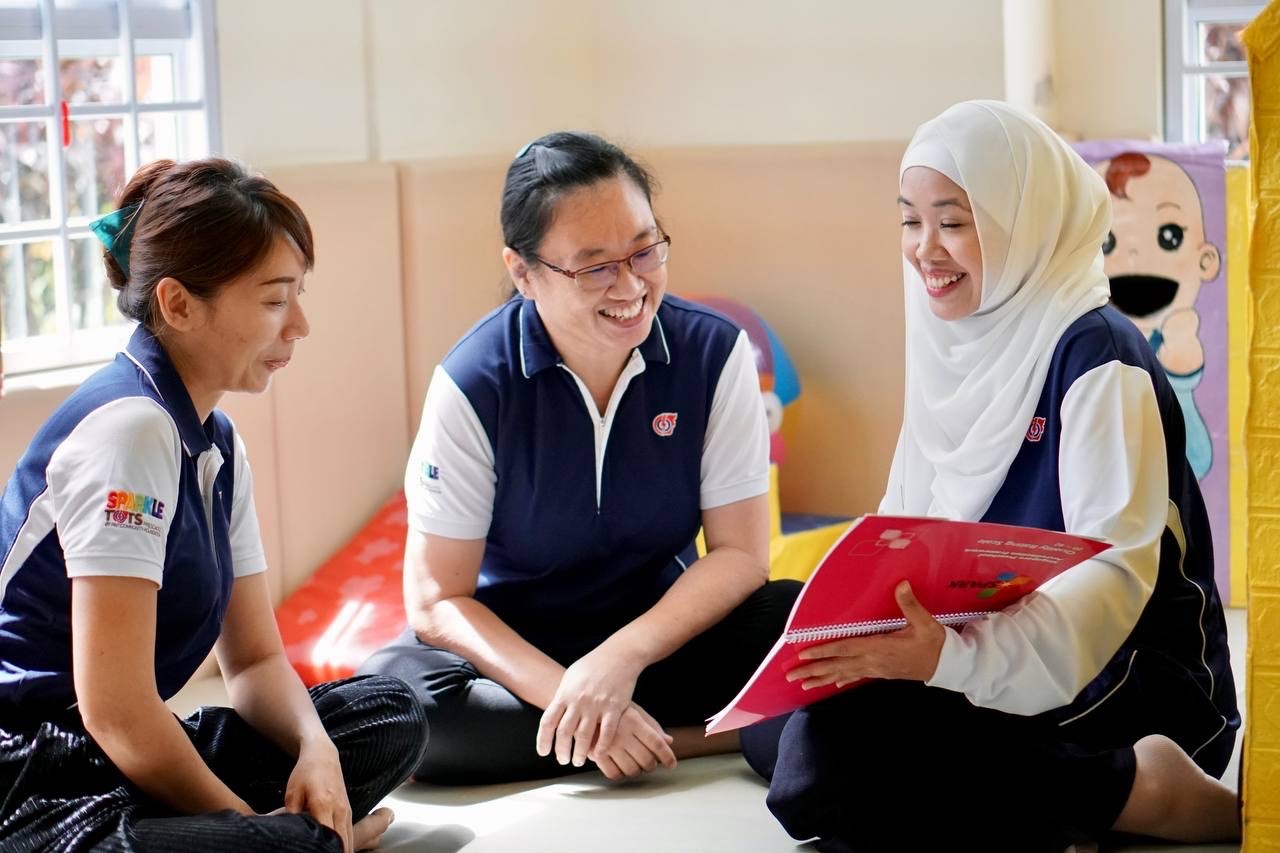Outdoor Play and the Well-Being of Children

Play is exploration, discovery, the child's way of learning, and is deeply engaging, joyful, and pleasurable, and stimulates imagination. Play increases knowledge and understanding and can increase the social understanding of children as they learn the rules of life through play. Self-confidence and resilience develop through play and children's sense of well-being is enhanced as they happily engage in play, often absorbed for long periods of time.
Should play be limited to indoors given some of the constrains of working and parenting in Singapore? - High rise apartments, humid climate, crowded places, and hectic schedules.
The answer is NO!
OPPORTUNITIES TO PLAY OUTDOORS IN SAFE ENVIRONMENTS IS NECESSARY FOR CHILDREN'S WELL-BEING
Outdoor play often involves physical movement, running, jumping, climbing, stretching, touching, balancing, so that children experience joy and freedom so necessary in their lives. Physical activity does enhance gross and fine motor skills but there is much more learning that occurs, especially in the outdoors. It also benefits children in other ways as it involves the total child’s development, physical, social, emotional and thinking.

This holistic view of play is promoted by Ms Wendy Ong, Executive Principal of My First Skool at Blk 140 Serangoon North, who says, ‘Outdoor play is joyful, fun, with friendships forming through movements.’ She also stated that all classes in her centre have outdoor play every day, weather permitting.
There are health benefits for outdoor activity and experts recommend that physical activity can balance the time that children are spending on IT gadgets. During IT usage children are generally sedentary and health experts recommend that young children should have at least one hour a day in the outdoors. This is viewed as the absolute minimum time, more, if possible.
DELAYING THE PROGRESSION OF CHILDHOOD MYOPIA (SHORTSIGHTEDNESS)
Recent studies in Singapore, Canada and Australia have shown that the onset of myopia can be delayed if children spend sufficient time outdoors. When children spend time outdoors, the sunlight triggers the release of a chemical in the eyes which stops myopia from developing. Also, playing outdoors provide children opportunities for viewing distances (far distance vision).
SOME SUGGESTED ACTIVITIES FOR PARENTS IN PROVIDING OUTDOOR PLAY OPPORTUNITIES
The prime requisite for outdoor play is safety and fostering well-being in children. If weather is extreme, very hot or stormy, then children should not play outdoors. Drinking water frequently, wearing a hat and appropriate clothes is very important for outdoor play.

Suggested activities include:
- Go for relaxing walks in the neighbourhood on weekends and during term holidays when there is time to learn more about nature and the environment. Riding on scooters or tricycles is fine too.
- Listen and respond to children’s questions as they discover properties of nature and aspects of the environment that need protection.
- Take photos of outdoor experiences and return to these later, giving children the chance to recall, revisit and use new vocabulary.
- Spend time at the beach – exploring sand and water has great attraction and benefit for children as does digging, building, making tunnels in the sand. Gathering shells and collecting nature items from the beach provide opportunities for children to compare and classify.
- Visit adventure playgrounds, parks and gardens. Some places suitable for young children include Jacob Ballas Children’s Garden at Singapore Botanic Gardens, West Coast Park, Bishan-Ang Mo Kio Park, Hindhede Nature Park and Bollywood Veggies.

Outdoor play can be relaxing as well as being a physical outlet relieving stress in children. When they return indoors, they may be more relaxed. Children may go to sleep more quickly if they have had some vigorous outdoor activity.
EDUCATORS MAKING PROVISION FOR OUTDOOR PLAY
As mentioned earlier, the prime requisite for play is safety with health precautions always in place.
Educators need to be conscious of the value of outdoor play. Sometimes the demands of a crowded curriculum lead to outdoor play being reduced. Children’s well-being is enhanced when given opportunities to play outdoors and learning abounds in the outdoor environment.

Outdoor physical activity should be fun. At its most basic form it is allowing children to spend time outdoors in an open-ended and self-directed way which encourages children to explore and discover their environment.
Children need the opportunity to develop spatial relationships, this is aided by outdoor exploration.
Activities can include:
- Unstructured explorationof the immediate centre environment. Discovering different textures, different colours and shapes in leaves, flowers and other nature features.
- Ball play - for young children, balls can be made from wool, foam or newspapers wrapped in plastic. Children can play with these freely, throwing, running after them. With older children, larger balls can be used, filling a large tub by throwing balls inside. Hoops and other outdoor equipment can be substituted for the balls.
- Treasure hunts – suitable for children above 3. Educators hide appropriate items and children are given some clues as to where things are hidden. Let older children record the items found in a task sheet.
- Rope or string placed outdoors in different shapes and encourage children to walk, run and jump between them.
- Challenging obstacle courses – this can be arranged to challenge emerging skills.
- Taking some indoor activities outside – reading books in a comfortable, shady place, drawing things seen in the environment and some dramatic play properties can stimulate movement. Interest area started indoors can also be extended in the outdoors.
- Having picnics outside – children can help to prepare fruit and sandwiches.

Parents and teachers, the message is clear: Go outdoors with children to enhance their well-being.
ABOUT THE AUTHORS
Emeritus Professor Marjory Ebbeck
Senior Academic Adviser, SEED Institute
Centre Director, Centre for Research & Best Practices, SEED Institute
Marjory Ebbeck (PhD, MA, M Ed Admin, Grad Dip in TESOL, Teaching Diploma) is an Emeritus Professor at UniSA. She is a consultant in early childhood education to many universities internationally. She is Senior Academic Adviser to SEED Institute where she assists with the research projects. Professor Ebbeck has written text books which are used in many early childhood programs and also contributes regularly to scholarly journals, editorial committees, external research grant committees in Universities.
Wendy Toh
Research Associate, Centre for Research & Best Practices, SEED Institute
Wendy Toh holds a Bachelor of Arts (with Honours), majoring in Chinese Language and Sociology, from the National University of Singapore. She has been working on research projects focusing on young children’s language and literacy development and learning. She also supports the SEED faculty in their research work including one on a cognitively oriented curriculum which is funded by the Lien Foundation.
You may also like

Translating Passion to Profession: Angelene, Nurziana and Sharidah's Voyage in Early Childhood Education
PDP has undoubtedly deepened the skill sets and enriched the expertise of exemplary educators such as (Nur)Ziana and Sharidah

Ms Jegatheswary
Cluster Head at Sunflower Preschool

From Cabin to Classroom: Journey of an Outstanding Early Childhood Educator
The PDP modules allowed me to get creative with lesson ideas and keep up with the ever-changing Early Childhood sector.

Ms Farhana Binte Mohamed Hassan
Early Years Educator - PCF Sparkletots @ Pioneer Block 987D (CC)

More Than Just a Place for Food
Young children are highly inquisitive, and learn most effectively with activities that allow exploration and experimentation.

Kinderland @ Yio Chu Kang